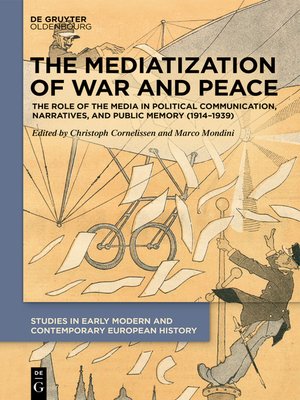The Mediatization of War and Peace
ebook ∣ The Role of the Media in Political Communication, Narratives, and Public Memory (1914–1939) · Studies in Early Modern and Contemporary European History
By Christoph Cornelissen

Sign up to save your library
With an OverDrive account, you can save your favorite libraries for at-a-glance information about availability. Find out more about OverDrive accounts.
Find this title in Libby, the library reading app by OverDrive.



Search for a digital library with this title
Title found at these libraries:
| Loading... |
During the First World War, mass media achieved an enormous and continuously growing importance in all belligerent countries. Newspaper, illustrated magazines, comics, pamphlets, and instant books, fi ctional works, photography, and the new-born "theater of imagery", the cinema, were crucial in order to create a heroic vision of the events, to mobilize and maintain the consensus on the war. But their role was pivotal also in creating the image of the war's end and fi nally, together with a widespread, new literary genre, the war memoirs, to shape the collective memory of the confl ict for the next generations. Even before November 1918, the media raised high expectations for a multifaceted peace: a new global order, the beginning of a peaceful era, the occasion for a regenerating apocalypse. Likewise, in the following decades, particularly war literature and cinema were pivotal to reverse the icon of the Great War as an epic crusade and a glorious chapter of the national history and to create the hegemonic image of a senseless carnage. The Mediatization of War and Peace focalizes on the central role played by mass media in the tortuous transition to the post-war period as well as on the profound disenchantment generated by their prophesies.






